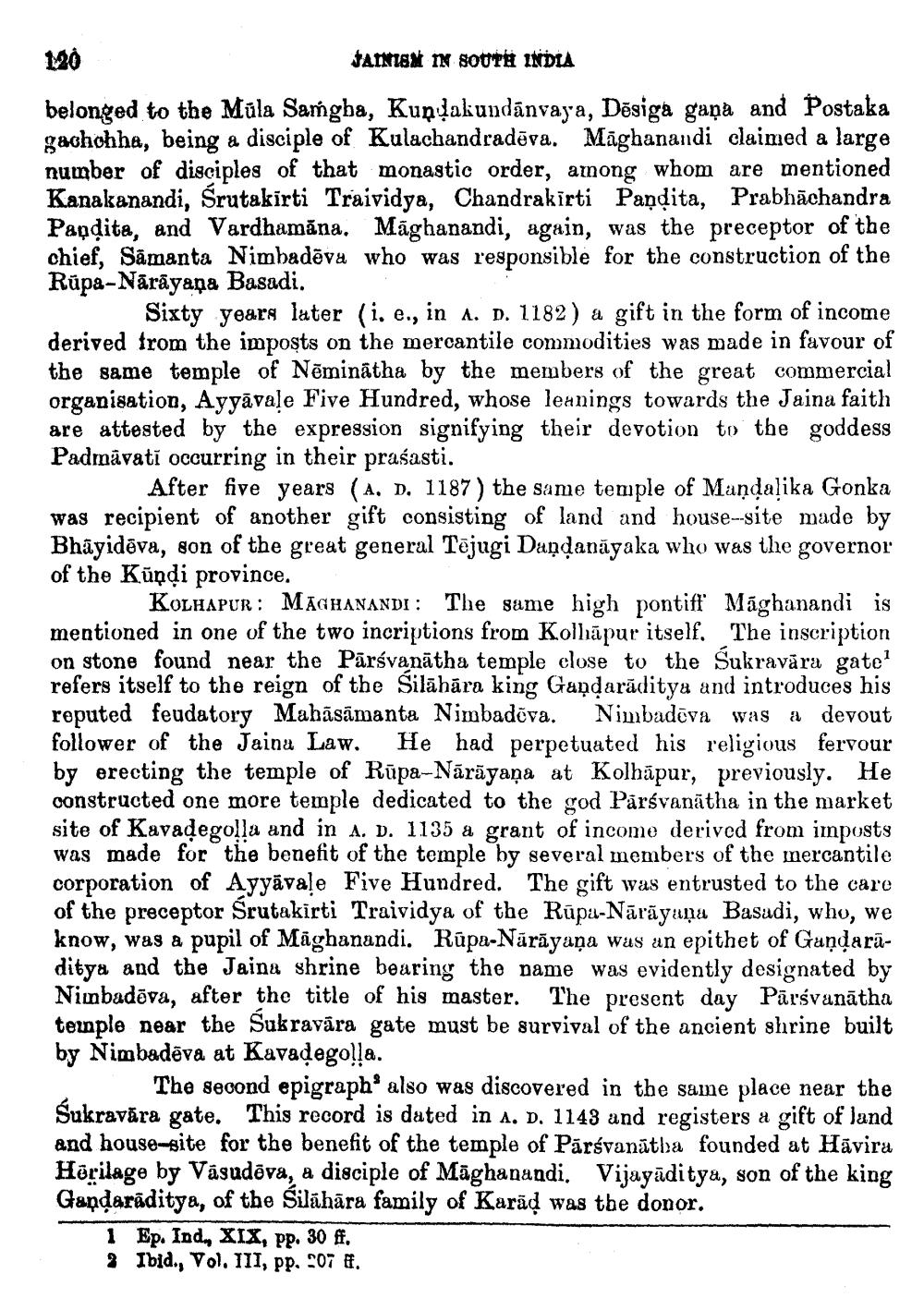________________
20
JAINISM IN SOUTH INDIA belonged to the Müla Samgha, Kundakundānvaya, Dēsiga gana and Postaka gachohha, being a disciple of Kulachandradēva. Māghanandi claimed a large number of disciples of that monastic order, among whom are mentioned Kanakanandi, Śrutakirti Traividya, Chandrakirti Pandita, Prabhāchandra Pandita, and Vardhamāna. Māghanandi, again, was the preceptor of the chief, Sāmanta Nimbadēva who was responsible for the construction of the Rūpa-Nārāyana Basadi.
Sixty years later (i, e., in a. D. 1182) a gift in the form of income derived from the imposts on the mercantile commodities was made in favour of the same temple of Nēminātha by the members of the great commercial organisation, Ayyāvale Five Hundred, whose leanings towards the Jaina faith are attested by the expression signifying their devotion to the goddess Padmăvati occurring in their prasasti.
After five years (A, D. 1187) the same temple of Mandaļika Gonka was recipient of another gift consisting of land and house-site made by Bhāyidēva, son of the great general Tējugi Daņdanăgaka who was the governor of the Kūņdi province.
KOLHAPUR: MAGHANANDI: The same high pontiff Māghanandi is mentioned in one of the two incriptions from Kolhāpur itself. The inscription on stone found near the Pārsvanātha temple close to the Sukravåra gate? refers itself to the reign of the Silāhāra king Gandarāditya and introduces his reputed feudatory Mabāsāmanta Nimbadova. Nimbadova was a devout follower of the Jaina Law. He had perpetuated his religious fervour by erecting the temple of Rūpa-Nārāyaṇa at Kolhāpur, previously. He constructed one more temple dedicated to the god Pārsvanātha in the market site of Kavadegolla and in A. D. 1135 a grant of income derived from imposts was made for the benefit of the temple by several members of the mercantile corporation of Ayyavale Five Hundred. The gift was entrusted to the care of the preceptor Srutakirti Traividya of the Rūpu-Nārāyana Basadi, who, we know, was a pupil of Māghanandi. Rūpa-Nārāyaṇa was an epithet of Gaņdarāditya and the Jaina shrine bearing the name was evidently designated by Niinbadõva, after the title of his master. The present day Pārsvanātha temple near the Sukravāra gate must be survival of the ancient shrine built by Nimbadēva at Kavadegolla.
The second epigraphe also was discovered in the same place near the Sukravāra gate. This record is dated in A. d. 1143 and registers a gift of land and house-site for the benefit of the temple of Pārsvanātha founded at Hāvira Hörilage by Vasudāva, a disciple of Māghanandi. Vijayāditya, son of the king Gandarāditya, of the Silāhāra family of Karād was the donor.
1 Ep. Ind., XIX, pp. 30 f. 3 Ibid., VolIII, pp. 207 ff.




